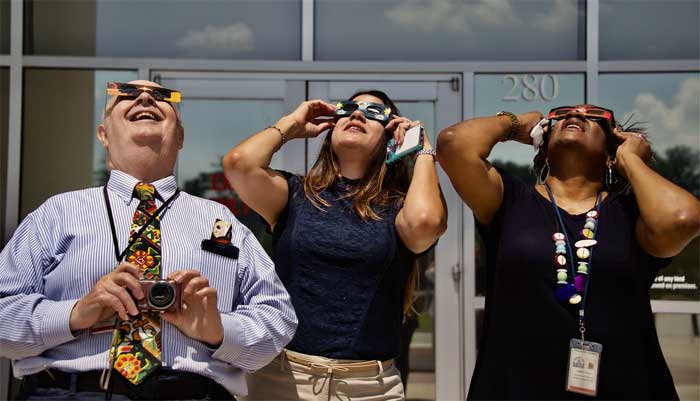An eclipse usually refers to an astronomical event when either the moon or the sun is partially or totally obscured by another object. Normally, when people use the term, they refer to a solar eclipse, when the sun is blocked by the moon as it passes between the two entities, casting a shadow over the earth, but more frequently we witness lunar eclipses, when the moon passes through the earth's shadow in it's fullest state, and can usually be observed from a greater area than a solar eclipse, in fact usually an entire hemisphere.
Eclipses are visually striking events, and observes and photographers worldwide take the time to watch and to truly capture the aesthetics. When it comes to lunar eclipses, the best viewing locations are the ones without any light pollution, so grab your camera and a tripod and drive out into the wilderness. National parks such as Yosemite, Joshua Trees and The Grand Canyon are fantastic locations to distance yourself from the city lights and to observe the night sky. While you will still be able to witness the eclipse from downtown LA, the view won't be nearly as clear.
When it comes to a solar eclipse, these can be observed from pretty much anywhere. Again, if there is a lot of a pollution, light or physical, this can soften the dramatic view, but as long as you have a clear view of the sky, you shouldn't have any problems. One thing to remember, only when observing the solar eclipse, is that you shouldn't look directly into the sun for the safety of your vision. There are special glasses you can purchase from many different outlets towards the date of a solar eclipse. Regular sunglasses can still be dangerous to use, and looking at the sun through a camera lens is also very dangerous. Also, make sure you remove your glasses while looking away from the sun. It is safe to remove them during a total solar eclipse during the moment that the sun is completely blocked out, and everything suddenly goes dark, but you should replace them over your eyes as soon as the light begins to reappear.
Obviously, visibility of the events depends very largely on the weather, more so than the pollution status of the observation area. Keep an eye on the forecasts of a view good areas for viewing the eclipse in your proximity to make sure you have the best chance at viewing the astronomical phenomenons.
On the 21st August, 2017, there was a total solar eclipse visible in the US, which was quite a rare event. There was also one on January 2019, but only slightly visible from the southernmost states of America as that will occured mostly over South America and the South Pacific. The next total solar eclipse to be visible from all over North America won't occur until 2024.
As mentioned before, lunar eclipses are much more common. This 2019, skywatchers in a few locations on Earth will have three opportunities to see a solar eclipse, a celestial event in which the moon briefly appears to take a chunk out of the sun. A total solar eclipse will occur on July 2, 2019. Nearly two years after the Great American Solar Eclipse of 2017, the world will once again have a chance to experience totality. A total solar eclipse occurs when the Moon's apparent diameter is larger than the Sun's, blocking all direct sunlight, turning day into darkness. This total solar eclipse will be visible from small parts of Chile and Argentina just before sunset. Some regions in the Pacific and in South America, including locations in Ecuador, Brazil, Uruguay, and Paraguay will see a partial solar eclipse.

